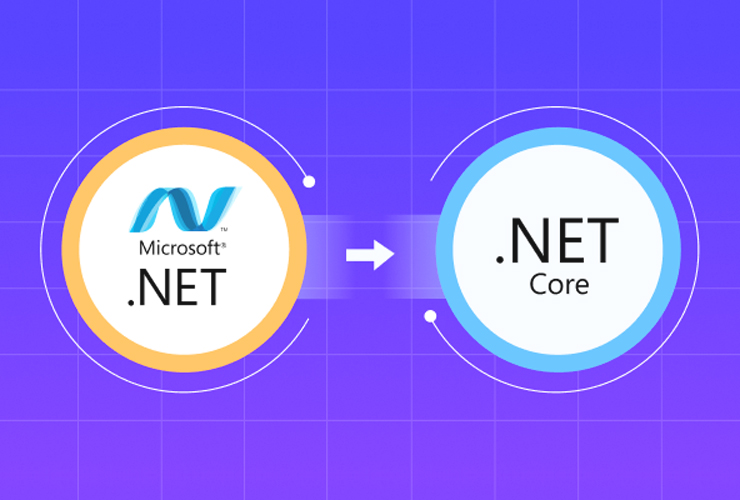Middleware is an essential concept in ASP.NET Core, as middleware processes all HTTP requests and responses. It handles requests and responses by performing distinct tasks (e.g., authentication, routing, error handling, logging) according to the order of the request pipeline.
Every incoming request goes through the request pipeline and flows through multiple middleware. Each middleware performs a function before the request is returned to the client.
Understanding how middleware works in ASP.NET Core is necessary for developers who want to create applications that are performant, safe, and maintainable.
What Is Middleware in ASP.NET Core?
Middleware is software components that process a request and response in an ASP.NET Core application. Each middleware is responsible for a specific function, such as the serving of static files, handling authentication, logging, and managing session state.
In other words, you could think of middleware as a series of stops or checks an incoming request will go through before it reaches your application logic. This design keeps core application code separate from features that may need to be included or omitted in the request lifecycle.
The Middleware Pipeline Explained
The middleware pipeline is how middleware will process requests sequentially. ASP.NET Core follows a top-to-bottom, sequential flow. When a request arrives, it proceeds sequentially down the pipeline. Each middleware will process the request itself or pass it to the next component.
The order is essential. For instance, authentication middleware must occur prior to authorization middleware since you must verify a user’s identity before authorizing what they can access. Similarly, routing must occur before executing the endpoint to make sure the appropriate controller or action is executed.
This flexible pattern provides developers the ability to customize application behaviors, boost performance, and ensure that cross-cutting behaviors such as caching, error output, and logging are maximally efficient.
Integrated Middleware Modules
ASP.NET Core has applicable middleware modules designed to simplify common web development workflows. Here are some of the most common ones:
- Static Files Middleware – Serves static files like CSS, JavaScript, and images from the file system.
- Routing Middleware – Determines how incoming requests map to endpoints or controllers.
- Authentication Middleware – Validates a user’s credentials and the associated identity of the request.
- Authorization Middleware – Enforces user authorization and permission settings.
- CORS Middleware – Allows cross-origin requests to happen securely, typically used for APIs accessed from different domains.
- Exception Handling Middleware – Provides uniform handling of all system errors and returns uniform responses or a custom error page.
These modules support the majority of ASP.NET Core applications and assure security, reliability, and performance.
Creating and Using Middleware Modules
ASP.NET Core has a robust set of built-in middleware, but for a real application you might need to build custom middleware modules to support additional business concerns. You might want to log API usage, measure the latency of requests, or create custom response headers for things like analytics and security.
You have the ability to add behaviors across the entire application without duplicating logic within a controller or service. Can also create separation of concerns in a manageable way that is readable, reusable, and loosely coupled.
Best Practices for Middleware Implementation
Implementing middleware and managing middleware effectively requires discipline and best practices. There are some guidelines worth looking into:
- Order Matters – The order in which middleware components are added determines the request flow. Always make sure authentication, routing, and authorization components are ordered logically.
- Keep It Lightweight – Each middleware runs for every request. Avoid performing complex actions or utilizing resources that will slow system performance.
- Utilize Reusability – You can reuse middleware in other projects. Designing logging, exception handling, and caching middleware for reuse creates highly cohesive modules.
- Gracefully Handle Errors – If you have middleware to catch exceptions the error-handling and return consistent responses, it will help with debugging, and you’ll be able to rely on your middleware.
- Utilize Configuration – Designing your middleware to use dependency injection for configuring services helps modularize services and integrate configurations effectively.
By following these best practices, you can maintain a clean, declarative middleware pipeline that performs reliably as your application grows.
Importance of Middleware
Middleware gives developers detailed control over the request and response pipeline, and makes using one of the most powerful concepts in ASP.NET Core. It exemplifies the modular, extensible nature of application design by allowing developers to easily plug in new features or modify existing features.
In the world of modern web application development, middleware is no longer just a technical requirement; it is a rich design decision. It contributes to security by enabling developers to enforce global authentication and authorization policies; it contributes to performance and throughput by facilitating caching and compression; and it contributes to observability by allowing developers to log and capture metrics in one location.
Summary
Middleware is in many ways the “glue” of ASP.NET Core’s request-handling ecosystem. It controls how the application handles requests, creates responses, and manages cross-cutting functionalities such as security, logging, and error handling.
By truly understanding how middleware works and how to organize it, developers can create ASP.NET Core applications that are not only powerful, but also clean, maintainable, and extensible for the future.
Whether you are using built-in middleware or writing your own, understanding and mastering middleware is an important concept for leveraging the full potential of the ASP.NET Core framework.












